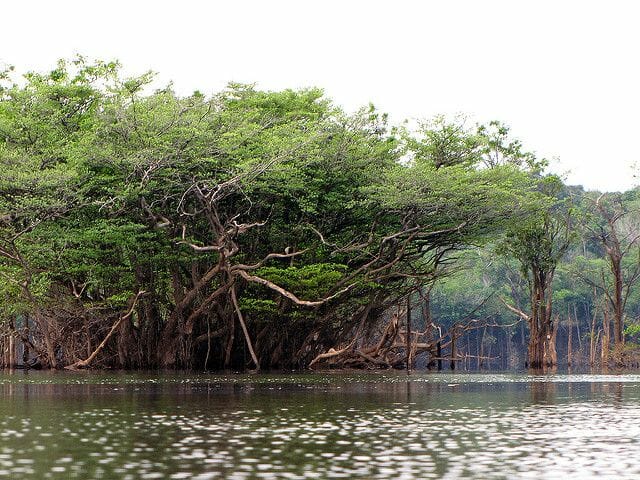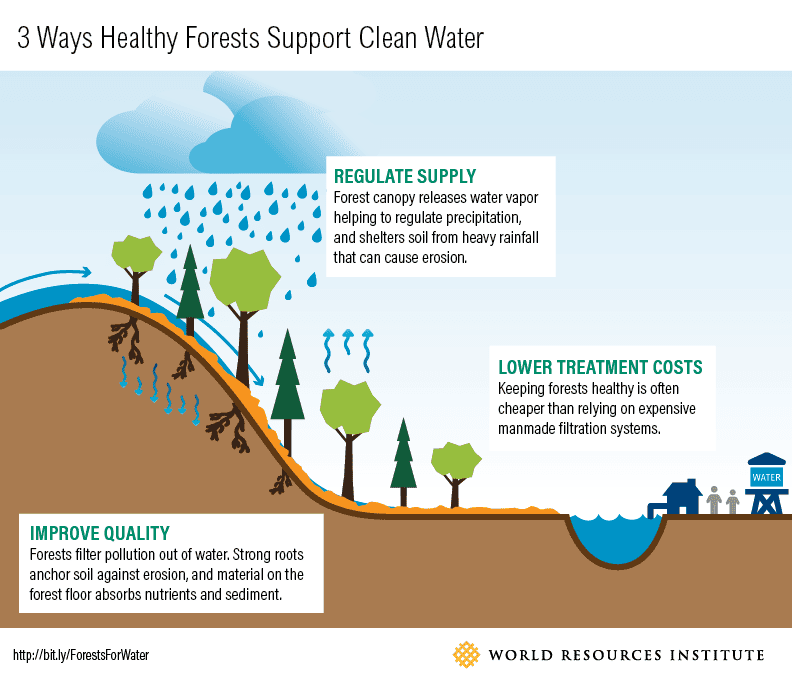Healthy forests are critical to providing clean water. Forests can positively impact the quantity, quality and filtration costs associated with a city’s water, sometimes even reducing the need for costly concrete and steel infrastructure.
The world’s major watersheds lost 6 percent of their tree cover on average from 2000-2014. Today, about 31 percent of the world’s watershed area is covered by forests. Deforestation in these watersheds, often caused by commodity and agricultural production, can contaminate water, fuel floods and drought, and lead to higher water-treatment costs.

Deforestation in the Amazon can affect rainfall in places as far away as Texas. Photo by Katja Schulz/Flickr
It’s fitting that the International Day of Forests (on March 21) and World Water Day (on March 22) fall next to each other, as the health of these important resources often go hand-in-hand. To celebrate this year, let’s look at just how big of a role forests play in providing clean water:
1. Healthy Forests and the Quality of Water
Erosion—when rainfall, runoff or wind detach soil particles—is a significant problem that affects both water quality and quantity. Healthy forests act as a filter to keep pollution out of water. Strong roots anchor soil against erosion and […]
Full article: 3 Surprising Ways Water Depends on Healthy Forests
More about plants and plant roots:
- Plant roots go to extreme lengths to find water
- Will Diversions Introduce Nutrients That Harm Wetland Vegetation?
- Study reveals plants ‘listen’ to find sources of water



![3 [more?] Surprising Ways Water Depends on Healthy Forests](https://www.h2oiq.org/wp-content/uploads/2017/10/17_INFO_GFW_WATER-01-healthy-forests-support-clean-water-768x666.png)